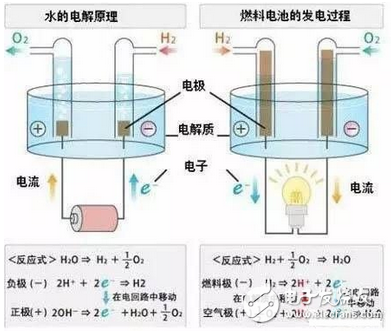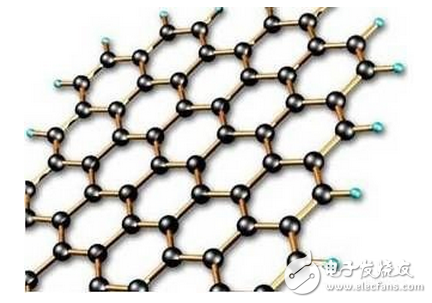
Privacy statement: Your privacy is very important to Us. Our company promises not to disclose your personal information to any external company with out your explicit permission.
![]() January 04, 2023
January 04, 2023
A battery is a device that converts the energy produced by a chemical reaction directly into electrical energy. It has stable voltage, stable current, stable power supply for a long time, little influence from the outside world, simple structure, convenient carrying, simple and convenient charging and discharging operation, stable and reliable performance, and brings a lot of convenience to modern social life.
In 1800, the Italian scientist Volta made a different volume of metal and electrolyte to make a Volta pile, which is considered to be the first power supply device in human history. Humans have invented lead-acid batteries, zinc-manganese dioxide dry batteries with NH4Cl as electrolyte, cadmium-nickel batteries, iron-nickel storage, alkaline zinc-manganese batteries and lithium-ion batteries. As research continues to deepen, new batteries have emerged in recent years.
| Fuel cell
A fuel cell is a power generation device that directly converts chemical energy present in a fuel and an oxidant into electrical energy. Fuel and air are fed into the fuel cell separately, and the electricity is wonderfully produced. It looks like a positive and negative electrode and electrolyte, like a battery, but in essence it can't "storage electricity" but a "power plant."

The hydrogen-oxygen fuel cell reaction principle is the reverse process of electrolyzing water.
The electrode should be:
Negative electrode: H2 + 2OH- → 2H2O + 2e-
Positive electrode: 1/2O2+ H2O 2e-→2OH-
Battery reaction: H2+ 1/2O2==H2O
Fuel cells involve theories of chemical thermodynamics, electrochemistry, electrocatalysis, materials science, power systems and automatic control. Only the fuel cell body can not work, there must be a corresponding auxiliary system, including reactant supply system, heat removal. System, drainage system, electrical performance control system and safety devices.
The fuel cell directly converts the chemical energy of the fuel into electric energy, and does not change the energy form of the boiler, the steam turbine, and the generator as in the conventional thermal power generator, thereby avoiding the energy loss of the intermediate conversion, and thus the energy conversion efficiency is relatively high. The efficiency of thermal power generation and nuclear power is about 30% to 40%, and the fuel cell power conversion efficiency can reach 45% to 60%. In addition, the fuel cell power station has a small footprint and a short construction period. The power of the power station can be assembled by the battery stack as needed, and the installation location is flexible and convenient. Whether the fuel cell is used as a centralized power station or a distributed power station, or as an independent power station for a community, a factory, or a large building, it is very suitable. The load response is fast and the running quality is high; the fuel cell can be switched from the lowest power to the rated power in a few seconds.

| Graphene battery
The graphene battery is a new energy battery developed by utilizing the characteristic that lithium ions can shuttle rapidly between the surface of the graphene and the electrode.
Graphene is a two-dimensional crystal with a thickness of one atom, which is separated from the graphite material and composed of carbon atoms. In 2004, Physicist Andrew Gem and Konstantin Novoselov of the University of Manchester in the United Kingdom succeeded in separating graphene from graphite, confirming that it can exist alone, and the two also jointly won the 2010 Novo Bell Physics Award. With the gradual breakthrough in mass production and large-scale problems, the industrial application of graphene is accelerating. Based on the existing research results, the first commercial application field may be mobile equipment, aerospace, new Energy battery field.

New batteries made of graphene materials will be smaller in size and weight, and the energy storage density will be greatly improved. More importantly, it greatly shortens the charging time and is convenient for consumers. Nanotek Instruments, Inc. of Ohio, USA, has developed a new battery that utilizes the rapid shuttle movement of lithium ions between the graphene surface and the electrodes. This new battery compresses hours of charging time to less than a minute. Analysts believe that the industrialization of fast-charging graphene batteries in the next minute will bring about changes in the battery industry, which will also promote innovation in the new energy vehicle industry.
The success of the experimental phase of the new graphene battery will undoubtedly become a new development point of the battery industry. Battery technology is the biggest threshold for the promotion and development of electric vehicles. The current battery industry is in the stage of bottlenecks in the development of lead-acid batteries and traditional lithium batteries. After the successful development of graphene energy storage equipment, if mass production is possible, It will bring new changes to the battery industry and even the electric vehicle industry.
It is the application prospect of graphene. Many countries have established graphene-related technology research and development centers, trying to use graphene commercialization, and then obtaining potential application patents in industrial, technical and electronic related fields. The European Commission has set up a special research and development plan for graphene as a “new future flagship technology project” and will allocate 1 billion euros in the next 10 years. The UK government has also invested in the National Graphene Research Institute (NGI) in an effort to bring this material from the laboratory to the production line and market in the coming decades.
China also has unique advantages in graphene research. From the production point of view, graphite, which is a raw material for graphene production, is abundant in energy storage in China and has low price. In addition, mass production and large-scale production are the most important factors hindering the large-scale commercial use of graphene. The first 15-inch single-layer graphene was successfully fabricated by chemical vapor deposition, and the graphene transparent electrode was successfully applied to the resistive touch screen to prepare a 7-inch graphene touch screen.
The above is the Top battery technology such as graphene battery / fuel cell / air battery we have listed for you. You can submit the following form to obtain more industry information we provide for you.
You can visit our website or contact us, and we will provide the latest consultation and solutions
Send Inquiry
Most Popular
lastest New
Send Inquiry
Send Inquiry

Mr. XuanCheng Li
Email:
Send Inquiry Tel:+86-0512-57282985
Fax:
Mobile Phone:+8613773169883
Email:
Address:No. 34, Yalu Village, Huangjing Town, Taicang City, Jiangsu Province, Suzhou, Jiangsu
Related Products List
Mobile Site


Privacy statement: Your privacy is very important to Us. Our company promises not to disclose your personal information to any external company with out your explicit permission.

Fill in more information so that we can get in touch with you faster
Privacy statement: Your privacy is very important to Us. Our company promises not to disclose your personal information to any external company with out your explicit permission.